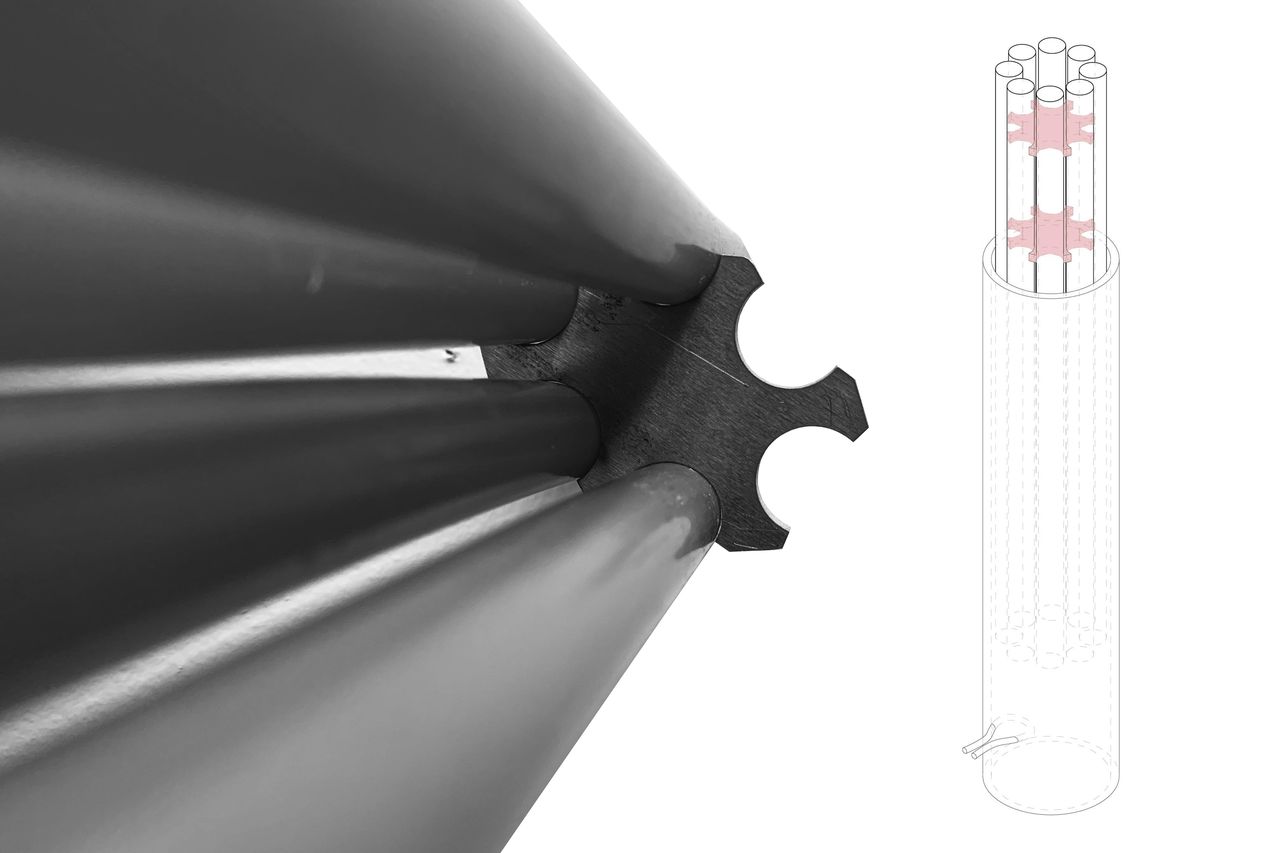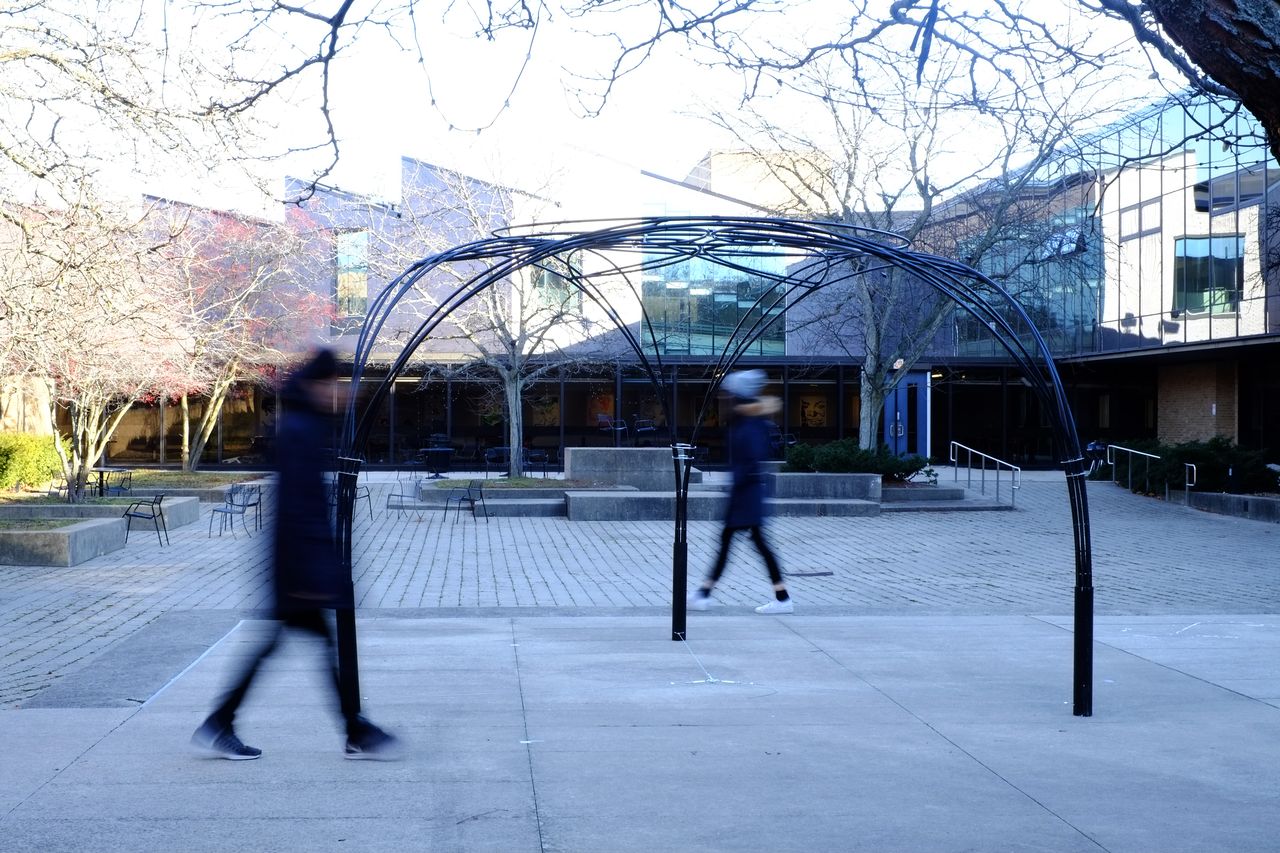AR Bending Shell
a Practice of Augmented Reality Building Process

Augmented
Reality does not only describe a method where the environment is perceivable
and is overlaid with 3D information but also allows to demonstrate complex
information on site. With advanced technology, architects can convey digital
information to a construction crew. AR Bending Shell utilizes hologram imaging
as a guide for the fabrication process of a bending-active linear shell. The
Hololens is used as a means to promote a rapid and efficient technique of
assembly, one that eliminates custom jigs and fixtures. In this project, the
computational generation of form is directly driven and informed by physical
behavior and material characteristics. Therefore, the virtual guide is
necessary due to the complexity of the design pattern and the nature of the
material (PEX pipe).
There
are three steps to build a pavilion through the AR method. Based on the
material properties, the material-oriented digital model indicates information
such as lengths, curvatures, and patterns of components first. Subsequently, the projected 3D design viewed
through the Hololens eases the fabrication process and creates a seamless
workflow between digital design and physical assemblies, such as real-time 3D
simulation of the bending structure, alignment, and positioning of the
individual elements, as well as real-time curvature measurements without the
use of customized tools. Finally,
locating 3D positions on site and erecting the flat pattern made of pipes.
Through AR device, the physical model could be adjusted in real-time. This
project demonstrates a practice of AR building process.
year: Fall 2018
type: Digital Fabrication course: Virtual Engagement, Taubman College
partner: Maryam AlJomairi, Apoorva Jalindre, Hong-Fen Lo, Shan-Chun Wen
advisor: Matias del Campo
status: Completed
size: 142” X 142” X 82.5”
location: Ann Arbor, MI